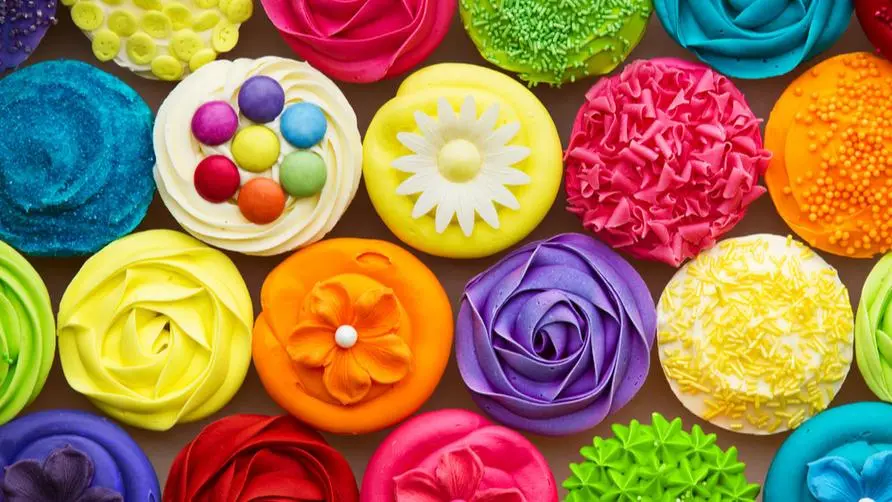Is eating too much "artificial coloring" likely to cause colitis and ADHD? 1 trick to reduce the risk of medical exposure

Artificial colors cause colon inflammation? Animal experiments say it affects the microflora of mice
Excessive exposure to chemicals during food processing may cause inflammation of the large intestine or increase the risk of “inflammatory bowel disease” (IBD)? An animal study published in the authoritative journal “Nature Communications” pointed out that long-term exposure of mice to the artificial coloring ingredient “Red No. 40” can induce mild colitis, and chronic exposure to colorants may interfere with the intestinal microflora of mice. , increasing the problem of colon inflammation.
The research team believes that premature exposure of mice to artificial pigments and colorants during their early stages of life may increase their susceptibility to colitis. Likewise, human childhood is considered a critical time for the future development of inflammatory bowel disease. Since artificial colors are commonly found in children’s foods, more research must be conducted in the future on whether different artificial colors induce synergistic effects on intestinal microflora and the risk of inflammatory bowel disease.
Will eating too much artificial coloring affect your health? Eat a variety of foods to reduce risk
According to information from the Taiwan Food and Drug Administration, currently approved food pigments are divided into two categories. One is to separate edible pigments from coal tar through distillation, sulfidation and nitrification. Common ones are Red No. 6, Red No. 7, Red No. 40, Yellow No. 4, Yellow No. 5, Green No. 3, Blue No. 1 and Blue No. 2. The other type is artificially synthesized pigments that exist in nature, such as beta-carotene, lutein, riboflavin (vitamin B2), etc.
Artificial colors are one of the most common food additives. Are there any health concerns about excessive exposure? Dr. Yan Zonghai, director of the Clinical Poison Center of Chang Gung Memorial Hospital, said in an interview that according to the “Scope of Use, Limits and Specifications of Food Additives”, there are about 800 types of legal food additives in 17 categories, and artificial colors are one of them. Legally permitted colorants or artificial colors can be safely used in food processing.
Dr. Yan Zonghai pointed out that the red No. 40 targeted in the study of “Nature Communications” is a commonly used artificial pigment in Taiwan and abroad, and its research results are worthy of attention. However, although animal experiments show that artificial dyes increase the risk of colitis, more research is needed to confirm whether they will have the same impact on humans. In addition, there are many types of artificial pigments, and their effects on the body cannot be generalized. From a food safety perspective, it is recommended that the public consume a balanced intake of various food sources to reduce the risk of impact.
Artificial colors increase ADHD in children? “Colorful” processed foods are the most common
Exposing children to artificial colors too early may increase the risk of ADHD? Dr. Yan Zonghai said that a clinical trial published in the important journal “Lancet” in 2007 indeed pointed out that artificial colors include Yellow No. 4, Yellow No. 5, Red No. 6, Red No. 40, and drinks containing benzoates (preservatives) , may individually or collectively cause hyperactivity and inattention in children, resulting in an increased risk of ADHD.
Dr. Yan Zonghai pointed out that epidemiological studies present correlation results, and there are many factors affecting ADHD in children, such as physical constitution, genes, family history and eating habits. It cannot be directly inferred that artificial pigments are the single cause of ADHD. From the perspective of healthy eating, parents are advised to try their best to let elementary school and preschool children eat more natural foods and develop appropriate eating habits.
Dr. Yan Zonghai reminded that artificial colors are mostly used in “colorful” processed foods, such as candies, cookies, puddings, chocolates, macarons, and sugary drinks. The use of legal artificial colors is subject to food safety licenses. People should choose reputable merchants when purchasing goods in stores. The competent authorities must regularly inspect the market to see if there is any illegal artificial coloring in order to ensure the food safety and health of all people.
Source:
Further reading:





